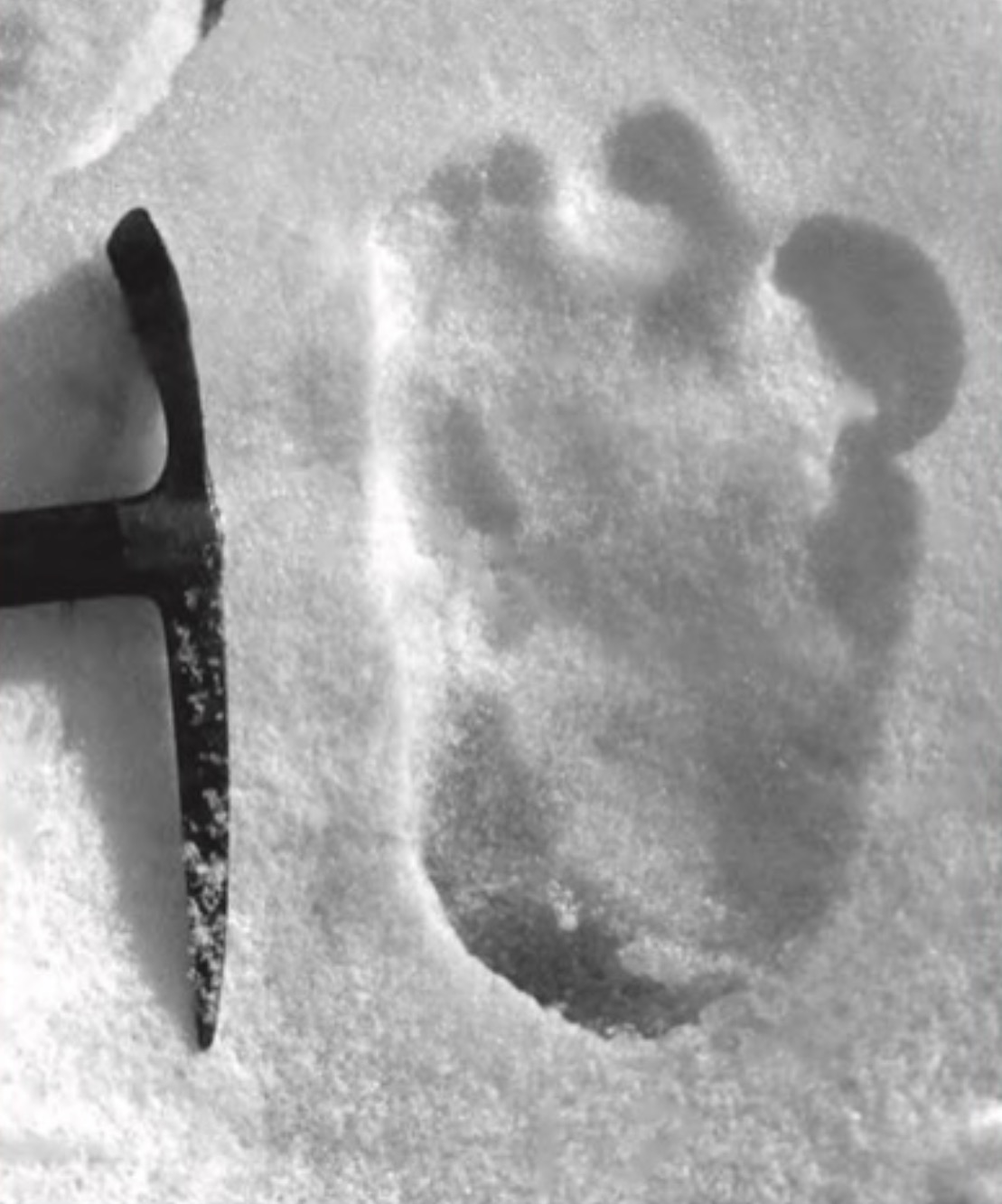In 1951, British mountaineer Eric Shipton made headlines around the world when he discovered a mysterious footprint in the snow while on an expedition in the Himalayas.
The print, which measured over 14 inches in length and had five toes, was unlike any known animal print and sparked widespread speculation about the existence of a previously unknown creature, commonly known as Bigfoot or the Yeti.
Shipton, who was known for his expertise in mountain exploration and had led several expeditions to Mount Everest, was on a trek to explore the uncharted territories of the Himalayas when he came across the mysterious print.
He photographed the print and took a plaster cast of it, which he later presented to the Royal Geographical Society in London.
The discovery of the Bigfoot print in the Himalayas generated widespread interest and controversy, and it remains a topic of debate and fascination to this day.
In this blog post, we will examine the discovery of the print and the various theories and explanations that have been proposed to explain it, and we will consider the ongoing debate about the authenticity of the print and its implications for the existence of Bigfoot.
The discovery of the Bigfoot print

On May 9, 1951, Eric Shipton and his team were on a trek through the Menlung Glacier in the Himalayas when they came across a strange footprint in the snow.
The print measured 14.5 inches in length and had five toes, and it was unlike any known animal print.
Shipton photographed the print and took a plaster cast of it, which he later presented to the Royal Geographical Society in London.
Shipton’s discovery of the Bigfoot print received widespread media attention, and it sparked a debate about the possibility of a previously unknown species in the Himalayas.
Some experts and members of the public were skeptical of the discovery and argued that the print could have been made by a hoaxer or an unknown animal.
Others, however, were convinced that the print was evidence of a hitherto unknown species and called for further investigation into the possibility of Bigfoot or the Yeti in the Himalayas.
The ongoing debate
Over the years, a number of theories and explanations have been proposed to explain the Bigfoot print discovered by Eric Shipton in the Himalayas.
Some argue that the print was made by a hoaxer or an unknown animal, while others believe that it is evidence of a previously unknown species.
One theory is that the print was made by a hoaxer, who may have carved the print into the snow using a tool or manipulated an animal track to create the impression of a Bigfoot print.
Skeptics argue that the print lacks the characteristics of a genuine Bigfoot track, such as a distinct heel and a visible arch, and that it is too perfect and symmetrical to be a natural track.
Another theory is that the print was made by a previously unknown animal, such as a species of ape or bear that has not been documented by science.
Proponents of this theory argue that the Himalayas is a remote and largely unexplored region, and it is possible that a new species could have escaped detection.
They point to other instances of new species being discovered in remote areas as evidence that it is possible for a new animal to exist in the Himalayas.
Despite the various theories and explanations that have been proposed, the authenticity of the Bigfoot print discovered by Eric Shipton remains a topic of debate and investigation.
Some experts and researchers believe that the print is genuine and that it is evidence of a previously unknown species in the Himalayas, while others are more skeptical and argue that it is likely the result of a hoax or an unknown animal.
In recent years, there have been a number of expeditions and searches for Bigfoot in the Himalayas, including efforts to find additional prints or physical evidence of the creature.
Some researchers have claimed to have found additional Bigfoot prints and other evidence, while others have been unable to find any conclusive proof of the creature’s existence.
Final thoughts
The discovery of the Bigfoot print by Eric Shipton in the Himalayas remains a topic of debate and fascination to this day.
While some believe that the print is genuine and that it is evidence of a previously unknown species in the Himalayas, others are more skeptical and argue that it is likely the result of a hoax or an unknown animal.
Regardless of whether or not you believe in Bigfoot, the discovery of the print and the ongoing debate about its authenticity is a testament to the enduring mystery and fascination surrounding this enigmatic creature.
Whether it is a myth or a real animal, Bigfoot continues to captivate the imagination and spark discussions and debates.
So why not join in on the fun and keep learning about and discussing this mysterious creature?

